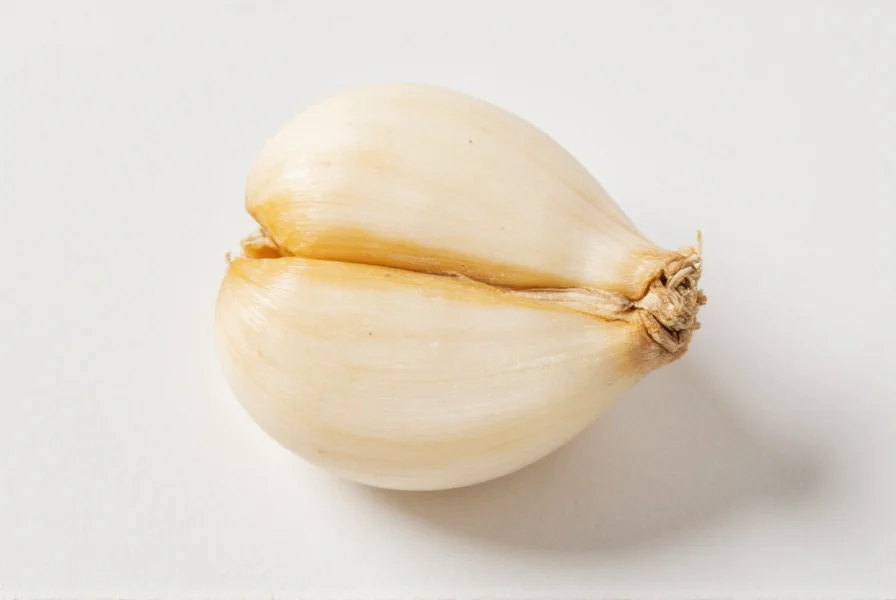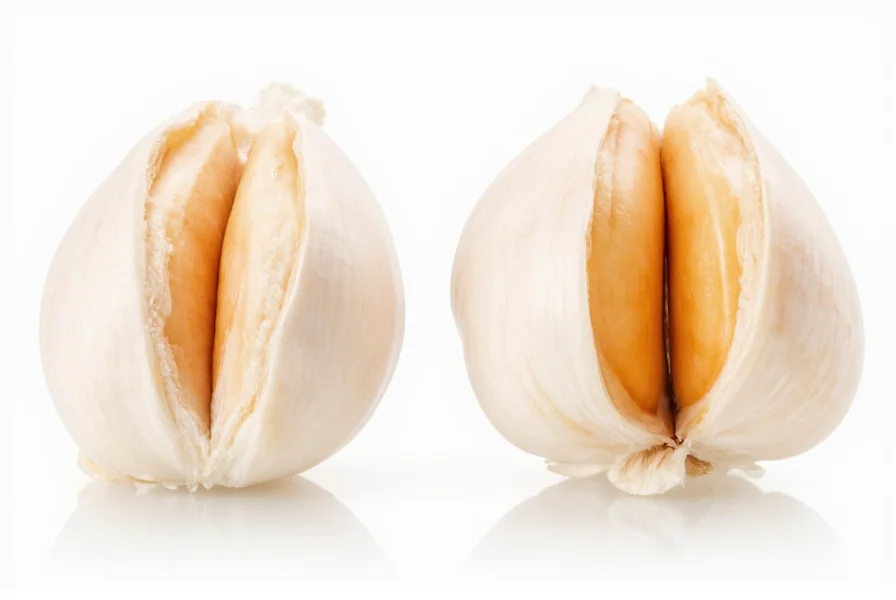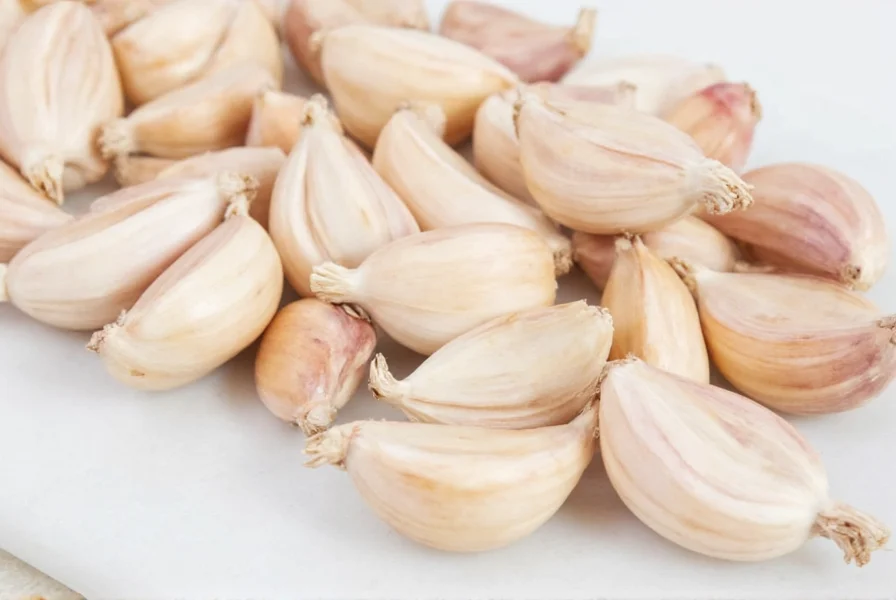Understanding what does clove of garlic look like is essential for both novice and experienced cooks. This distinctive culinary ingredient has specific visual characteristics that help differentiate it from other parts of the garlic plant and similar-looking foods.

Physical Characteristics of a Garlic Clove
When examining how does a fresh garlic clove look, several key features stand out:
- Shape: Irregular teardrop or asymmetrical wedge shape
- Size: Typically 1-2 inches long and about 0.5-1 inch wide at its thickest point
- Color: Outer skin ranges from white to light purple; inner flesh is creamy white
- Texture: Papery, translucent skin covering firm, slightly moist flesh
- Weight: Approximately 3-7 grams for a medium-sized clove
Garlic Clove vs. Whole Garlic Bulb
Many people confuse a single garlic clove with the entire garlic bulb. Understanding the difference between garlic clove and bulb is crucial:
| Feature | Single Garlic Clove | Whole Garlic Bulb |
|---|---|---|
| Structure | Individual segment | Complete head containing 10-20 cloves |
| Size | 1-2 inches long | 2-3 inches in diameter |
| Shape | Teardrop-shaped | Rounded, bulbous shape |
| Outer Layer | Thin, papery skin | Thicker, net-like protective layer |
How to Identify a Garlic Clove
When shopping or preparing meals, knowing how to identify a garlic clove prevents confusion with similar ingredients. Fresh garlic cloves have distinctive features that set them apart from other allium varieties:
The most reliable identification method involves examining both the exterior and interior. When peeled, a genuine garlic clove reveals firm, creamy white flesh with a slightly pungent aroma. The flat base shows small root scars where it was attached to the bulb's central stem. Unlike elephant garlic (which is actually a leek), true garlic cloves have a more intense flavor and smaller size.

Common Misconceptions About Garlic Cloves
Several misconceptions exist about what is the appearance of a single garlic clove. Many people mistakenly believe:
- All garlic cloves are uniform in size (in reality, cloves within a single bulb vary significantly)
- Garlic skin color indicates quality (white, purple, or striped skin is normal variation)
- Soft cloves are always bad (some softness is normal, but mushiness indicates spoilage)
- Garlic cloves should be perfectly symmetrical (natural variation creates irregular shapes)
Fresh, high-quality garlic cloves feel firm when squeezed and have dry, intact skin without mold or excessive blemishes. The skin should peel away easily when pressed at the root end.
Why Garlic Clove Identification Matters
Accurately recognizing garlic clove visual description impacts cooking results significantly. Recipes often specify "1 clove" rather than weight measurements, so proper identification ensures correct flavor balance. Different garlic varieties (softneck, hardneck, elephant garlic) produce cloves with varying sizes and potency, affecting how much you should use in recipes.
When substituting jarred minced garlic for fresh cloves, understanding the visual characteristics helps determine proper conversion ratios. One average fresh clove typically equals about 1/2 teaspoon of jarred minced garlic.
Frequently Asked Questions
What does a single garlic clove look like compared to a whole bulb?
A single garlic clove is one segment of the whole bulb. The clove has a teardrop shape with a pointed tip and flat base, while the whole bulb is round and contains multiple cloves (typically 10-20) wrapped in a protective outer layer. Individual cloves are 1-2 inches long, whereas a complete bulb is usually 2-3 inches in diameter.
How can I tell if a garlic clove is fresh and good to use?
Fresh garlic cloves feel firm when gently squeezed and have dry, papery skin without mold, dark spots, or green sprouts. The skin should be intact and range from white to purple-tinged. Avoid cloves that feel soft, mushy, or lightweight, as these indicate age or spoilage. When peeled, the flesh should be creamy white and crisp, not yellowed or discolored.
Are all garlic cloves the same size within one bulb?
No, garlic cloves naturally vary in size within a single bulb. Outer cloves are typically larger while inner cloves are smaller. This size variation is normal and depends on the garlic variety and growing conditions. When recipes call for "1 clove," they generally mean an average-sized clove (about 1 inch long), but for precise measurements, chefs often weigh cloves (typically 3-7 grams each).
What's the difference between regular garlic cloves and elephant garlic cloves?
Elephant garlic cloves look similar but are significantly larger (often 2-3 times bigger) than regular garlic cloves. Despite the name, elephant garlic is actually a type of leek with milder flavor. Regular garlic cloves have a more intense, pungent aroma and flavor. Visually, elephant garlic cloves have paler skin and more symmetrical shape compared to the irregular teardrop shape of true garlic cloves.











 浙公网安备
33010002000092号
浙公网安备
33010002000092号 浙B2-20120091-4
浙B2-20120091-4